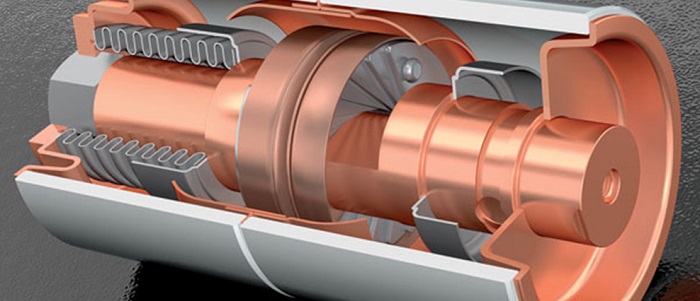
When vacuum interrupters are manufactured or used in field there are three tests used to validate their function :1: contact resistance, 2:high potential withstand, 3:The leak-rate test.
- Contact Resistance Test:A micro-ohmmeter is applied to the closed contacts of the VI and the resistance is measured and recorded. The result is compared to the design and/or the average values for the other Vacuum Interrupters in the same run.
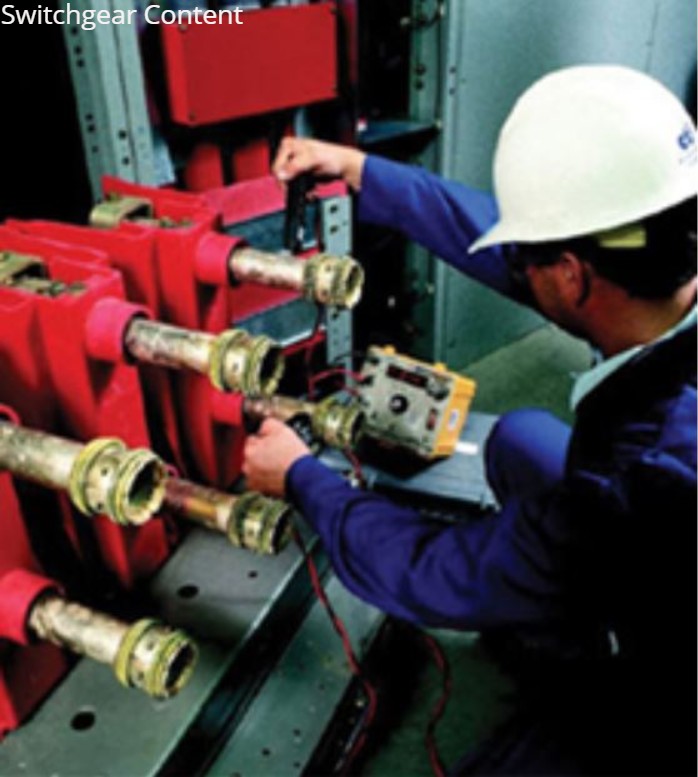
- High Potential Testing:A high potential voltage is applied across the open contacts of the VI. The voltage is increased to the test value and any leakage current is measured.Factory testing may be done with either AC or DC high-potential test sets . There are a variety of portable test sets available from manufacturers for performing a high-potential test on open vacuum interrupters. The great majority of these test sets are dc test sets, as they are considerably more compact, and hence, more portable, than available ac high-potential test sets.
When a DC test voltage is used, a high field emission current from a microscopic sharp spot on one contact can be misinterpreted as a sign of a vacuum interrupter filled with air. To avoid a misinterpretation of the test result, the vacuum interrupter should always be subjected to both dc voltage polarities. This means the test should be carried out by reversing polarities. A bad interrupter filled with air will have a similarly high leakage current in both polarities.
A good interrupter with a good vacuum level may still have a high leakage current, but this will generally be in only one polarity. An interrupter with a tiny sharp spot on the contact produces a high field emission current only when it is a cathode, not an anode. So repeating the test by reversing the polarities will avoid any misinterpretation of the result. The test voltage to be used for testing a vacuum interrupter is recommended by the manufacturers of vacuum interrupters.
You can see one of high voltage Vacuum Interrupter Tester as below pic from 10 to 60 kV DC from Megger company:
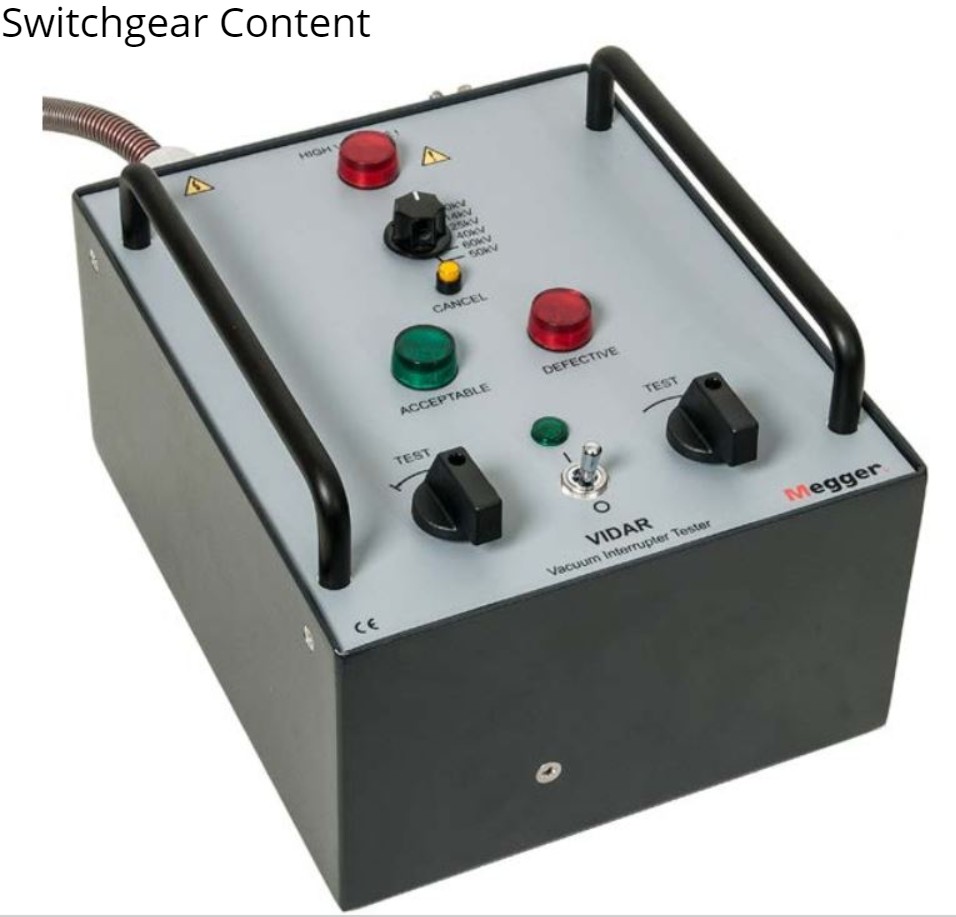
- The leak-rate test (MAC test):This test is based on the Penning Discharge Principle which is named after Frans Michael Penning (1894-1953). Penning showed that when a high voltage is applied to open contacts in a gas and the contact structure is surrounded with a magnetic field, the amount of current flow between the plates is a function of the gas pressure, the applied voltage, and the magnetic field strength.
Below Fig shows the basic test setup for a VI leak rate test. For field testing, the VI is placed in a portable fixed magnetic coil or a flexible cable is wrapped around the test specimen a prescribed number of times. When the test is started, high voltage DC is applied to the VI and the baseline leakage current is measured. Next, a DC voltage pulse is applied to the magnetic field coil during a second application of the high voltage DC and the total current is measured during the pulse. The ion current is calculated as the total current minus the leakage current. Since the magnetic field and the applied voltage are both known, the only variable remaining is the pressure of the gas. If the relationship between the gas pressure and the current flow is known, the internal pressure can be calculated based on the amount of current.
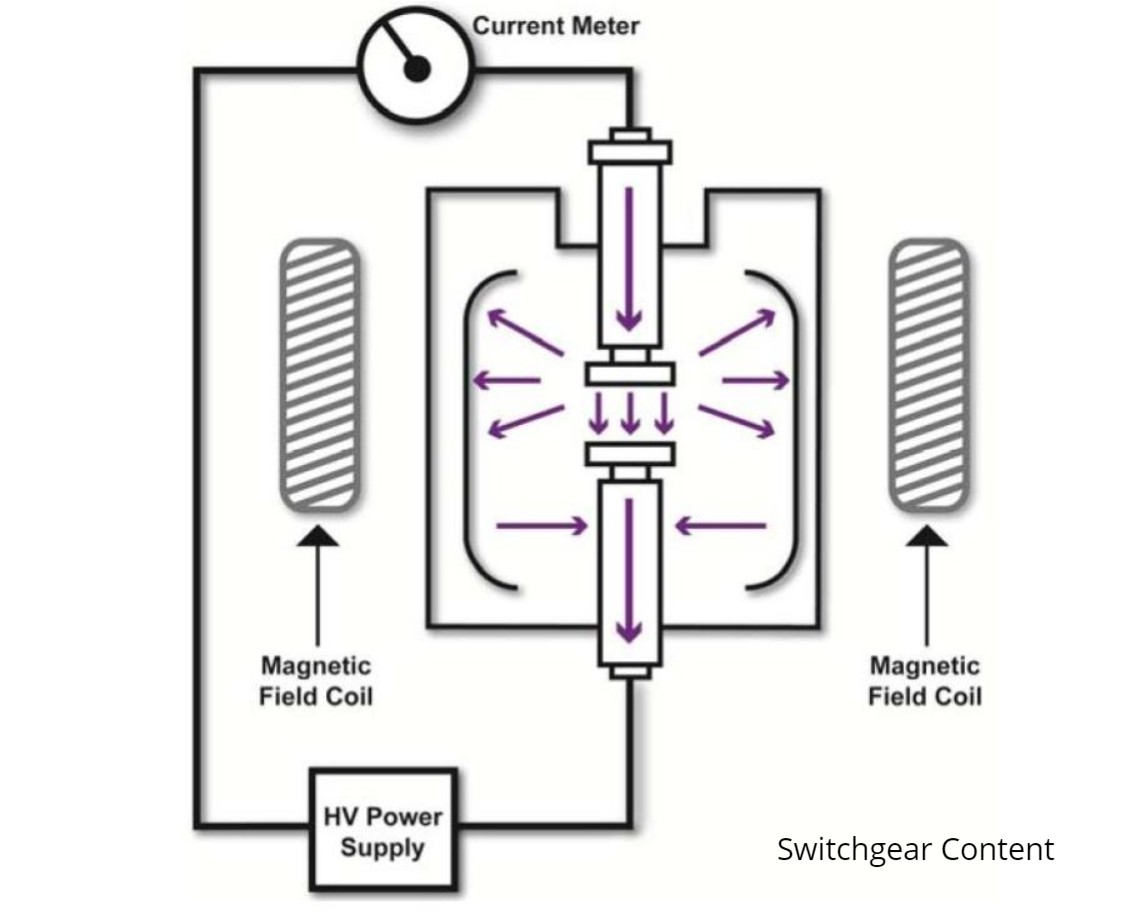
There will always be some leakage in even the best VIs, and that leakage may be slow enough that the VI will meet or even exceed the manufacturer’s predicted service life. On the other hand, unexpected increases in the leak rate can greatly shorten VI life. When VIs within circuit breakers are tested during routine maintenance using traditional methods they go back into service with only the guarantee that it will function at the moment, with no forecast about future results. Setting up for and performing the leak rate test is no more difficult than many of the field tests that maintenance personnel are already familiar with and the results are extremely accurate in determining the pressure inside the VI. With continued adoption of leak rate testing, the electrical industry can expect to see a marked improvement in maintenance efficiency and a reduction in the number of unexpected failures of VIs.
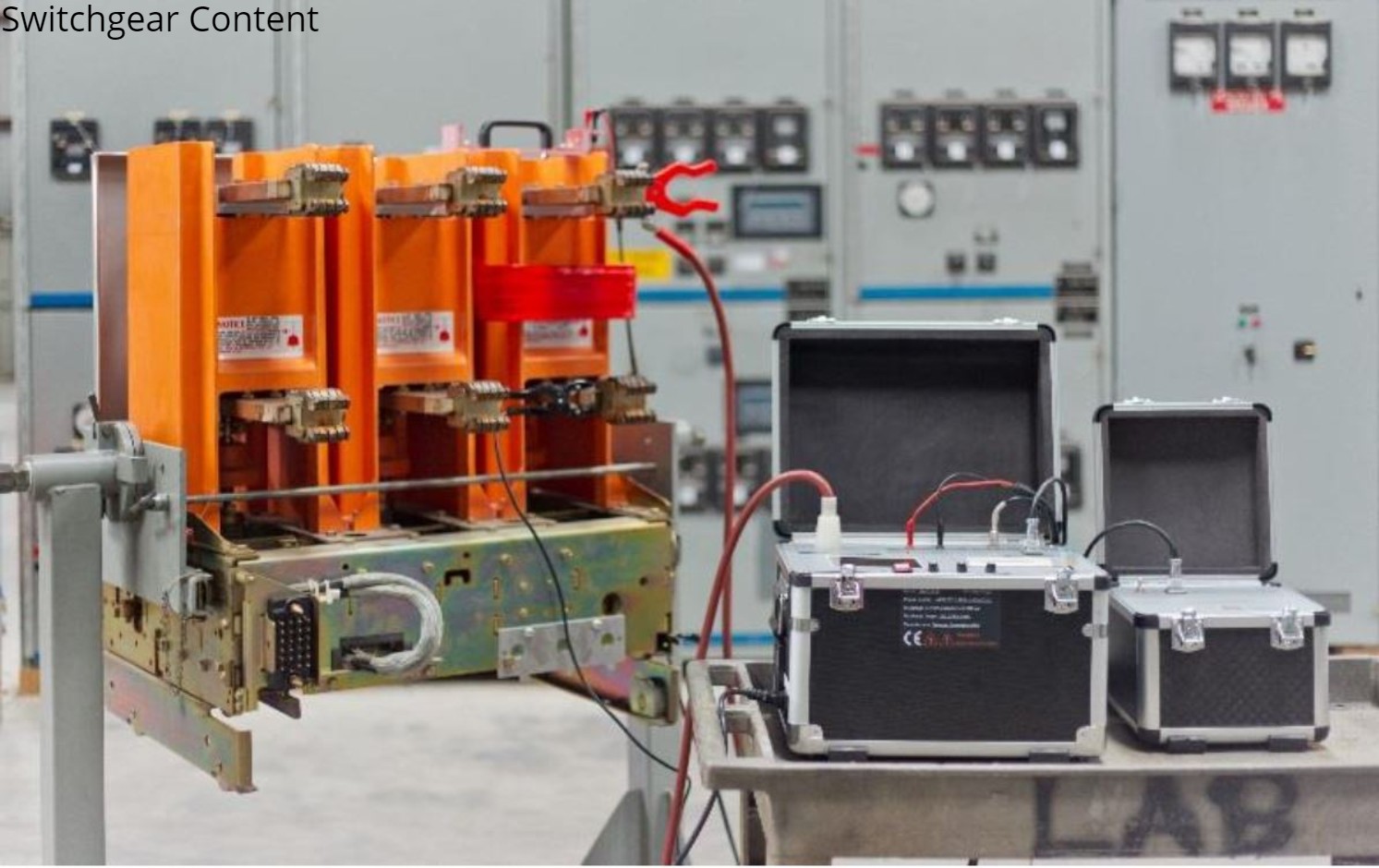
In above Fig shows how the rigid, magnetic coil in MAC test can be used on the entire pole when the VI is not readily accessible.Although many of the vacuum breakers in the field allow for application of the coil to either individual VIs or individual poles, some do not have sufficient space or configuration.
References:
- SIEMENS Tech Topics No.126.
- Medium voltage vacuum circuit breaker extension by Finley Ledbetter – Group CBS David Walterscheid – Group CBS.
- Predicting the Remaining Life of Vacuum Interrupters in the Field Article,Reprinted with permission of NETA World Journal. Copyright 2012.
- Megger Company Vacuum Interrupter Tester catalouge VIDAR.
- 3 Basic Electrical Tests for Medium-Voltage Circuit Breakers Article from testguy.net.



